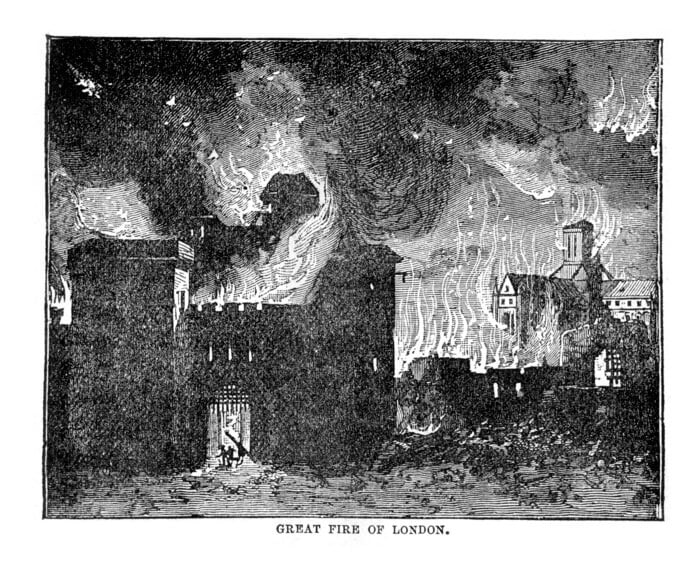Introduction
On 2nd September in 1666, the city of London witnessed one of the most devastating events in its history: the Great Fire of London. A seemingly minor incident at a bakery on Pudding Lane led to a massive blaze that would ultimately reshape the capital of England forever. In this blog, we’ll delve into the causes, the aftermath, and the historical significance of The Great Fire of London. So, whether you’re a history buff or simply curious, read on to discover the comprehensive story of this catastrophic event.
The Build-Up to The Great Fire
Before we delve into the story of The Great Fire of London, it’s essential to understand the context in which it happened. London in 1666 was a bustling city, crammed with wooden buildings, narrow streets and a population recently weakened by the plague. The conditions were ripe for disaster.
The Fateful Night of 2nd September, 1666
The fire began in the early morning hours at a bakery owned by Thomas Farriner on Pudding Lane. Despite desperate attempts to quell the flames, they quickly spiralled out of control. The fire raged for five days, devastating large areas of the city.
Why Did the Great Fire of London Spread So Quickly?
Several factors contributed to the rapid spread of the Great Fire of London. The city’s infrastructure was primarily composed of wooden structures closely packed together, which served as fuel for the blaze. Additionally, a strong east wind carried the flames from building to building. Attempts to create firebreaks by demolishing houses often came too late, further enabling the fire’s spread.
The Aftermath and Reconstruction
The Great Fire of London led to significant loss and change. Approximately 13,200 houses, 87 churches and countless other structures were destroyed. Amazingly, the death toll was relatively low, estimated to be around six people, but some historians believe it would have been higher than this. The aftermath led to a complete transformation of London, including the implementation of building codes and the creation of a more modern, stone-based cityscape designed by architects like Christopher Wren.
The Lasting Impact of The Great Fire of London
The Great Fire of London had a profound impact on London and its residents. Beyond the physical rebuilding, it led to reforms in urban planning, fire safety and insurance systems. The fire also inspired literary works and is often cited as a turning point in London’s, and indeed Britain’s, history.
The Great Fire of London was a devastating yet pivotal event that changed the course of the city’s history. Although the destruction was immense, the resilience shown in the rebuilding efforts laid the foundation for the modern city we recognise today.
Thank you for reading about The Great Fire of London. If you’ve enjoyed our blog and are eager for more captivating historical activities for your little adventurers, don’t hesitate to explore the Mysteries in Time website! Immerse yourselves in the fascinating world of history, where learning and fun intertwine. Click here to start your journey into the past now!


